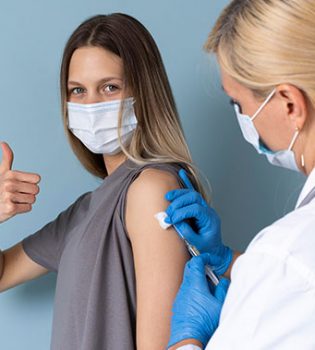Vulvar dystrophies are the general name of skin diseases with itching in the genital region. All skin diseases can be seen on the skin in the external genital region. The main symptom of the diseases seen in this region is itching, and in cases of itching that does not go away, it should be evaluated with biopsy.
Vulvar Dystrophy: Diagnosis and Treatment (Genital Itchy Diseases)
Nonneoplastic diseases of the skin and mucosa (vulvar dystrophies) according to the International Society for the Study of Vulvar Disease (ISSVD) classification were defined as:
(i) Squamous cell hyperplasia,
(ii) Lichen sclerosus
(iii) Other dermatoses (psoriasis, seborrheic dermatitis, tinea, lichen simplex chronicus, lichen planus, etc.).
Squamous Cell Hyperplasia (SHH)
They are lesions that can be seen in the reproductive and postmenopausal age groups, regardless of a specific cause.1 Apart from the anogenital region, they can also be seen on the neck and legs, and increase with stress. They usually develop after contact with topical irritants. They often occur secondary to long-term use of topical treatments such as antifungals or steroids.2Atopy, allergy and eczema anamnesis constitute risk factors for the development of the disease.3 Skin burning sensation, itching and traces of itching are common signs and symptoms. The disease may progress with different appearances depending on epithelial thickening and hyperkeratosis in the lesion region, skin moistness, scratching frequency and topical drug use. Lesions may extend beyond the labia majora, although the labia majora, interlabial folds, outer regions of the labia minora, and the clitoris are the most commonly involved regions. The lesion regions may also be localized, raised from the surface, unclear borders and widespread, although well-circumscribed. In the presence of mild keratosis, the vulva may often appear dark red. Lesions may be in the form of white patches, or as white and red regions with different localizations. Thickening, fissures and peeling may be observed in the erythematous skin. Pubic hair is often broken and reduced, the skin is dull. Skin integrity may be impaired in places and infection may have developed. Careful evaluation of the vulva is important to rule out carcinoma. In the biopsy, hyperkeratosis, acanthosis and sometimes parakeratosis are detected. There is elongation and deterioration of the rete pegs in the thickened epithelium.1,2

Lichen Sclerosus (LS)
Although 7-15% of the lesions can be seen in the prepubertal period, it is usually the disease of postmenopausal women.4,5 Juvenile LS lesions may disappear spontaneously without sequelae, or they may continue after menarche.6 Painful defecation and dysuria are seen in children in the presence of perianal and periurethral involvement. Extragenital lesions are also observed in 11% of adult patients.7 Autoimmune diseases, familial genetic factors, sex hormones, infection, trauma, connective tissue and immunocytological changes may be involved in the pathogenesis.8 It is characteristic that it progresses with severe itching, especially at night, leading to ecchymosis, cracks, abrasions and even ulcers, and itching is not proportional to the spread of the disease. A burning sensation is observed due to irritation of nerve endings or tension of the skin due to edema and loss of elasticity.8Although the lesions may be localized, the main location is the anogenital region, and perineal-perianal skin involvement may form an 8-shaped lesion.4Involvement may occur in the clitoris, internal surfaces of the labia majora, labia minora, introitus and perianal region.9 Disease can also be seen in the back, neck, armpits, forearms, over the collarbone, intramammary regions, and rarely in the lips and oral cavity, but unlike those in the genital region, lesions in these localizations are usually asymptomatic.10Primary LS lesions are slightly pink or ivory, uniformly shaped, well-demarcated, centrally depressed, papules that form plaques in places.8The skin can give the appearance of wrinkled cigarette paper or parchment paper with its atrophic, white, glossy, thin and loose appearance. Sometimes keratosis can create a hypertrophic appearance on the skin. In lesions localized to the clitoris, the glans clitoris may not be distinguished due to skin edema and phimosis may develop in the long term. The labia minora may be completely erased due to atrophy. Fissures may occur in skin folds, particularly in the posterior forch. As a result of synechia of the edges of the skin in regions with involvement, introitus may be stenosed and sexual intercourse may become impossible.11 Biopsy reveals hyperkeratosis, thickened epithelium, flattening of rete pegs, and cytoplasmic vacuolization in basal cells. Lichen sclerosus is often seen accompanied by hyperplastic epithelium and thin epithelial foci.1Squamous cell hyperplasia is observed in 27-35% of patients, and intraepithelial neoplasia in 5% of patients. Wallace et al. reported 4% development of vulvar cancer in patients followed for 12.5 years.4,7
Other Dermatoses
All other skin diseases such as psoriasis, seborrheic dermatitis, tinea, lichen simplex chronicus, lichen planus that can cause lesions in the vulva are under this title. Lesions may be in the form of papules, plaques, nodules, vesicles, bullae, pustules, telangiectasia, comedoes, cysts, etc.

Treatment
Before long-term treatment, it is essential to establish a tissue diagnosis by taking biopsy, especially from areas of fissure, ulceration, induration and thickened plaque. The vulva should be kept clean and dry, and if there is anxiety, it should be eliminated. If there is an appearance of eczematous vulvitis due to infected skin peeling or inappropriate medication, dressings impregnated with aluminum acetate (Burow’s solution) may be beneficial. Especially in cases of squamous cell hyperplasia, a rapid response can be obtained with lotions or creams containing corticosteroids. Moderate or strong topical steroid application 2-3 times a day relieves itching and inflammation. Should be careful since long-term use of fluorinated steroids can lead to atrophy in the tissue. In cases where long-term treatment is required, after the symptoms are controlled with fluorinated steroids, in the presence of thickened hyperplastic lesions, the treatment can be continued with hydrocortisone until a normal skin appearance is achieved.1
Traditionally used topical testosterone preparations have now been replaced by potent 0.05% clobetasol propionate (Dermovat, Psoderm, Psovat, Temovat) or halobetasol propionate (Diprolene) preparations. Bracco et al. found that after 3 months of topical treatment, symptoms disappeared in 20% with testosterone and 75% with clobetasol propionate, and that histological changes in the tissue regressed significantly.12 The researchers recommended the use of 0.05% clobetasol propionate twice a day for the first month and once a day for the next 2 months. Lorenz et al. reported 77% complete and 18% partial remission of symptoms during 12-month follow-up after treatment with 0.05% clobetasol propionate.13
Adding antihistamines to the treatment and sedatives to relieve anxiety may be beneficial. The use of hydroxyzine, doxepin, diphenhydramine, amitriptyline can reduce itching, and its sedative effect can help break the itch-scratch cycle.14Selective serotonin reuptake inhibitors can provide relief from the patient’s anxiety. Creams with lanolin and hydrogenated vegetable oils can provide skin relief.
In very severe cases, oral steroids can be used to provide initial control. Because of the risk of adrenocortical suppression, treatment with 0.5 mg/kg prednisolone may be started instead of long-acting steroids. Generally, after relief is achieved with a dose of 30 mg/day, the treatment is reduced to 5 mg/day with weekly 5 mg dose reductions.14In cases where itching cannot be responded to with treatment, subcutaneous steroid injection or 0.1 mg subcutaneous pure alcohol injection with intervals of 1 cm after vulvar mapping may be applied.15,1
If the treatment is not successful, the accuracy of the diagnosis, the development of superinfection, contact with irritants and the presence of allergic contact dermatitis to the treatment preparations should be questioned. It should be kept in mind that symptomatic improvement was 84.8% and 92.7% for SHH, 70.8% and 87.5% for LS, whereas histological regression was 63.6% and 74.8% for SHH, and 29% and 42% for LS, in the follow-ups 3 and 6 months after treatment, patients should be followed up at 3-6 month intervals in terms of recurrence.











